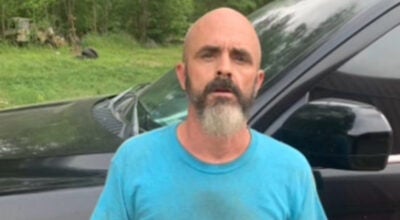MDOT crews observing, begin work to fix sinkhole
Published 12:01 am Thursday, August 14, 2014

Mississippi Department of Transportation employees move safety barriers around a sinkhole in the exit lane of John R. Junkin Drive to US-61 South Wednesday. (Sam Gause / The Natchez Democrat)
NATCHEZ — Mississippi Department of Transportation crews are inspecting a sinkhole nearly 15 feet wide and 25 feet deep that developed Tuesday night inside the right turning lane of U.S. 61 in front of Natchez Regional Medical Center.
“We feel safe it’s not going to get much bigger,” said MDOT District 7 Engineer Albert White. “But we’ll have someone monitoring it around the clock.”

MDOT employee James Johnson directs employees as a backhoe is delivered for crews to use to fix the sinkhole. (Sam Gause / The Natchez Democrat)
The hole grew from a small depression into nearly 15 feet wide and 25 feet deep Tuesday night, White said.
“We are treating it as an emergency,” White said. “We are thankful and grateful no one got hurt.”
The area near the sinkhole has been blocked off, but the highway should stay open unless MDOT needs to move more equipment into the area, White said.
White said repairs to the road will take several weeks, but construction can’t start until he is sure the sinkhole is no longer growing.
White is uncertain how much time should pass until he feels like the sinkhole is safe to work in.
Equipment to move employees safely into the hole and to stabilize the hole has been moved on the site.
“There’s a very big possibility it’s going to fall in,” White said. “We want our workers to be safe, but it’s something you got to do.”
The source of the sinkhole is still unknown, White said, until work teams can get to the bottom of the hole safely.
“We think it was an existing pipe put in when the road was originally built,” White said. “But we won’t know the exact cause until we remove everything.”
White said sinkholes often happen when soil erodes above broken pipes. The pipe on U.S. 61 is nearly 30 feet underground, and those types of sinkholes are not easily detected.
White’s team will be using cameras to look into any broken pipes to try to see any other breaks that could cause another sinkhole.
“These things are hard to see, you can’t really see them because they are so far under ground,” White said. “And some of these systems you can’t get a camera to them. In this situation, you have a lot of inlets, connections and turn in the pipe. You can’t get the camera into those sections.”
White said he does not expect the sinkhole to grow any wider, but construction teams will have to widen it for repairs.
White said the U.S. 61 sinkhole is more serious than previous ones because it developed in a high-traffic area.





